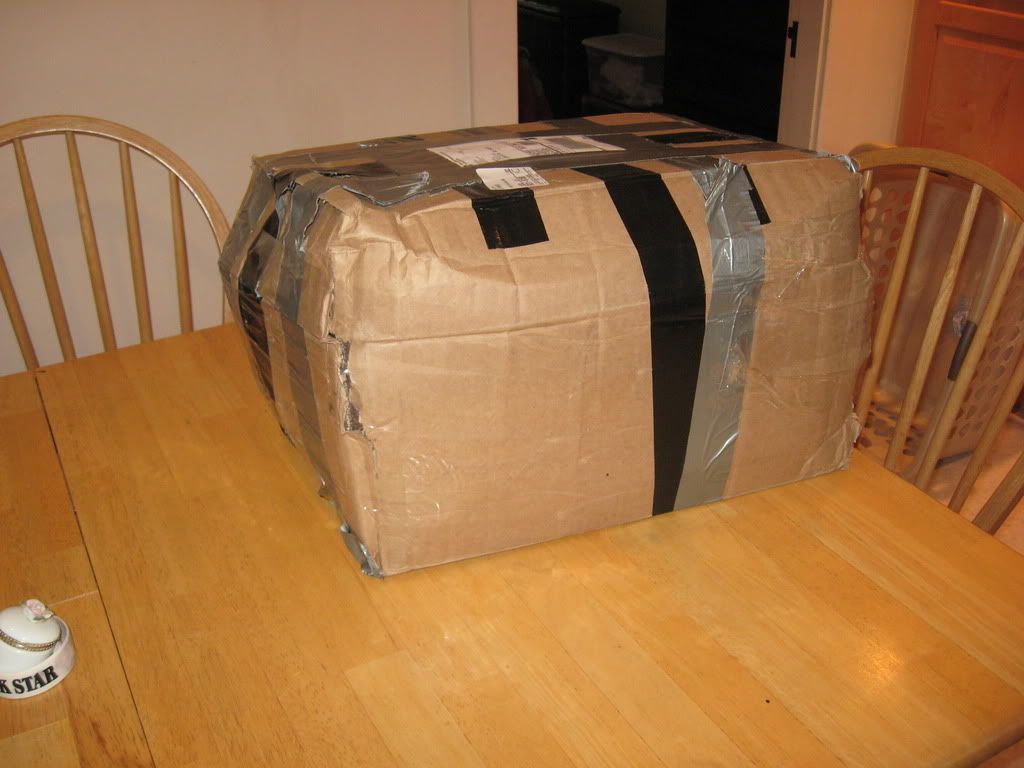Post by RPA-1 man on Aug 1, 2011 20:35:25 GMT -5
Pioneer F-91 Reference Digital Synthesizer Tuner
I know tuners are not very exciting to many here on the forum but I'm so excited. I've wanted one of these for years.
Made in 1987. Beautiful Rosewood side panels and it ranked #20 in the Tuner Information Center shootout.
Here's some info on the F-91, in Pioneer's own words:
"Elite Reference Digital Synthesizer Super Tuner: We've pushed the level of FM sound quality to record highs with the addition of two Pioneer exclusives to the F-91. The first is the ARTS (Active Real-Time Tracing System) included in the IF section of the tuner. With some tuners, especially expensive ones, you have the choice of using a narrow or wide IF bandwidth. The first lets you avoid interference, but you have to settle for an increase in distortion. The second provides lower distortion and better sound, but interference may get in the way. Pioneer ARTS - it's simply the best of both worlds: its IF filter actively follows the desired signal while rejecting interference. Now you can enjoy both the low distortion of a wide bandpass and the high selectivity of a narrow bandpass. Sensitivity is much improved, too. The second Pioneer feature is the Digital Direct Decoder Type III. It takes the output from the ARTS IF circuitry and converts it into digital form before directly turning it into stereo analog signals. Thanks to pure digital operation, our DDD Type III is less prone to signal degradation. Moreover, in the Type III, we've simplified the circuitry using a new PLL detector, which has reduced noise even much further. Improvements extend to other circuits of the tuner as well. The front end, for instance, features an ID MOSFET to improve reception. Indeed, the front end is as highly sensitive and selective as an elaborate 4-ganged tuning capacitor. The F-91, like Pioneer amps and CD players, is designed based on our anti-vibration concept to damp harmful resonance and vibration for improved sound. We've turned circuits into modules and filled them with epoxy resin. And we've added honeycomb ribs to the chassis and used large insulators to shut out external vibration."
The stereo separation is excellent. The music fills the room effortlessly even at low volumes. It sounds very crisp and open. I'm especially surprised at how quiet weak stations are. The background noise is basically inaudible and it still maintains excellent stereo separation. In fact I really can't detect a difference in stereo separation from strong stations.
Unfortunately the "person" that packed it for shipping wasn't the sharpest crayon in the box. I could never imagine shipping anything, especially audio gear, in this fashion. Although I do give credit to UPS for their wonderful package handling skill, it's pretty obvious that it was not packed properly. I'm really amazed it was not damaged any worse than that one rear corner.
Check out what's left of the carton:



The tuner was under the plastic bag, not in it, just sitting unprotected in the packing peanuts at an angle facing upward. Sorry I don't have a picture of the tuner in the box, but i was anxious to get it out and inspect the damage. The box wasn't even large enough to lay the tuner flat inside it.

A few pictures for your entertainment. After all what good would this thread be without photos






I know tuners are not very exciting to many here on the forum but I'm so excited. I've wanted one of these for years.
Made in 1987. Beautiful Rosewood side panels and it ranked #20 in the Tuner Information Center shootout.
Here's some info on the F-91, in Pioneer's own words:
"Elite Reference Digital Synthesizer Super Tuner: We've pushed the level of FM sound quality to record highs with the addition of two Pioneer exclusives to the F-91. The first is the ARTS (Active Real-Time Tracing System) included in the IF section of the tuner. With some tuners, especially expensive ones, you have the choice of using a narrow or wide IF bandwidth. The first lets you avoid interference, but you have to settle for an increase in distortion. The second provides lower distortion and better sound, but interference may get in the way. Pioneer ARTS - it's simply the best of both worlds: its IF filter actively follows the desired signal while rejecting interference. Now you can enjoy both the low distortion of a wide bandpass and the high selectivity of a narrow bandpass. Sensitivity is much improved, too. The second Pioneer feature is the Digital Direct Decoder Type III. It takes the output from the ARTS IF circuitry and converts it into digital form before directly turning it into stereo analog signals. Thanks to pure digital operation, our DDD Type III is less prone to signal degradation. Moreover, in the Type III, we've simplified the circuitry using a new PLL detector, which has reduced noise even much further. Improvements extend to other circuits of the tuner as well. The front end, for instance, features an ID MOSFET to improve reception. Indeed, the front end is as highly sensitive and selective as an elaborate 4-ganged tuning capacitor. The F-91, like Pioneer amps and CD players, is designed based on our anti-vibration concept to damp harmful resonance and vibration for improved sound. We've turned circuits into modules and filled them with epoxy resin. And we've added honeycomb ribs to the chassis and used large insulators to shut out external vibration."
The stereo separation is excellent. The music fills the room effortlessly even at low volumes. It sounds very crisp and open. I'm especially surprised at how quiet weak stations are. The background noise is basically inaudible and it still maintains excellent stereo separation. In fact I really can't detect a difference in stereo separation from strong stations.
Unfortunately the "person" that packed it for shipping wasn't the sharpest crayon in the box. I could never imagine shipping anything, especially audio gear, in this fashion. Although I do give credit to UPS for their wonderful package handling skill, it's pretty obvious that it was not packed properly. I'm really amazed it was not damaged any worse than that one rear corner.
Check out what's left of the carton:



The tuner was under the plastic bag, not in it, just sitting unprotected in the packing peanuts at an angle facing upward. Sorry I don't have a picture of the tuner in the box, but i was anxious to get it out and inspect the damage. The box wasn't even large enough to lay the tuner flat inside it.

A few pictures for your entertainment. After all what good would this thread be without photos


















